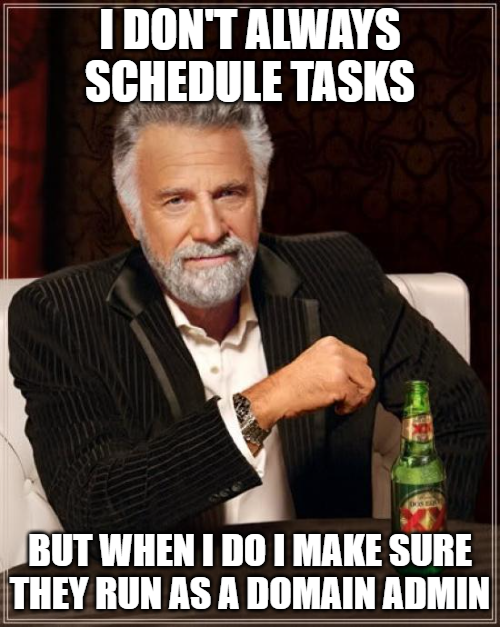Security should be a lifestyle and not just a “To-Do” list. As a Cybersecurity Professional myself, I cannot preach enough about the importance of Layered Security. No matter how big or small your environment, remember that even David took down a GIANT with a slingshot and pebble. Threats in our industry are diverse and dangerous. Staying ahead of the curve is no walk in the park and that is why a series of this magnitude is important for proactive reasoning.
In the first installment, we briefly covered threats such as Phishing (BEC Attacks), Malware Attacks, and Insider Threats. In this second installment, we will dive into Ransomware Attacks, Distributed Denial of Service attacks, and Zero-Day Exploits.
4. Ransomware Attacks:
Ransomware involves the encryption of a victim’s data by an attacker, who then demands a ransom in exchange for the decryption key. The impact of ransomware attacks ranges from financial loss to severe disruption of operations. This form of attack is huge in critical sectors such as healthcare, finance, and government.

Motions to Mitigate:
Mitigation against Ransomware attacks can consist of:
· Endpoint Security: Install and regularly update endpoint security software to detect and prevent malicious software from running on a user’s device.
o Some popular Endpoint Detection and Response solutions include Microsoft Defender for Endpoint, VMware’s Carbon Black, and CrowdStrike Falcon Platform.
o If Endpoint Security is something your company is interested in implementing, SecurIT360 would love to assist you on this journey through our SOC services.
· User Behavior Analytics: Using user behavior analytics tools to identify deviations from normal user behavior can help detect compromised accounts more efficiently.
o This can be achieved through SecurIT360’s 24/7/365 security operations center, which provides real-time monitoring through utilization of MDR and EDR solutions.
· Disable Unnecessary Services: Disabling or restricting services and features that are not essential for business operations can prevent Ransomware from exploiting these services.
· Network Segmentation: Segmenting your network to isolate critical systems and data from the rest of the network can help contain the spreading of ransomware.
· Backup and Disaster Recovery: Regularly backing up critical data and systems to offline or secure locations is another helpful tip. Ensuring backups are not accessible from the network and testing data recovery procedures can go a long way when ensuring you can restore your systems in case of an attack.
· Patch and Update Software: Keeping operating systems, software, and applications up to date with the latest security patches will combat and address vulnerabilities that ransomware may exploit.
5. Denial of Service (DoS) and Distributed Denial of Service (DDoS) Attacks:
DoS and DDoS attacks aim to make a network, service, or system unavailable to its intended users. This type of attack is aimed to hinder the “A”, availability, within the CIA (Confidentiality, Integrity, and Availability) triad. This is achieved by overwhelming the target with a flood of internet traffic that the target was not built to withstand. In a DDoS attack, the attacker uses multiple compromised computers (Botnets) as sources of traffic, making these attacks particularly challenging to mitigate.

Motions to Mitigate:
A few ways to mitigate this are by implementing Distributed Traffic Filtering, Content Delivery Networks, and Geographic Blocking in your environment. Other forms of DOS/DDOS mitigation consist of:
· IP Reputation Lists: Utilize IP reputation lists and databases to block known malicious IP addresses and networks. This should be updated quarterly due to the frequency of IPs switching hands or ISPs (Internet Service Providers).
o We know that this can become quite a task but our Security Operations Center can help relieve this pressure through our managed firewall services.
· Network and Server Redundancy: Build redundancy into your network and server infrastructure to ensure that a failure in one component does not result in a complete service outage.
· Intrusion Prevention Systems (IPS)/Intrusion Detection Systems (IDS): Deploy IPS solutions to detect and block malicious traffic and behavior at the network level.
o The SecurIT360 SOC Team can assist with detecting malicious activity through our MDR solutions and blocking known malicious with some of our other managed services (EDR, Managed Firewalls, etc).
· Black Hole Routing (BGP Sink holing): Configure your network to use black hole routing to discard malicious traffic. BGP sink-holing can redirect DDoS traffic to a “black hole” where it is discarded.
6. Zero-Day Exploits:
A zero-day exploit targets a software vulnerability that is unknown to the software’s developer. The term “zero-day” refers to the fact that the developer has zero days to fix the vulnerability once it becomes known. This method is one of the most dangerous to defend which is why organizations need to have a more proactive approach rather than reactive when regarding this subject.

Motions to Mitigate:
· Advanced Threat Detection Solutions: Deploy advanced threat detection solutions that can identify zero-day attacks based on abnormal behavior and anomaly detection.
· Application Security Testing: Conduct regular security assessments, including penetration testing, to identify and address potential weaknesses in your applications and systems.
o If a Pentest is something your organization is interested in having conducted, contact SecurIT360’s Offsec Department to set up an engagement.
· Behavior-Based Analysis: Employ behavior-based analysis tools that can detect unusual or malicious behavior on endpoints and networks. Zero-day exploits often exhibit abnormal patterns.
o This can fall under the umbrella of EDR services. Detecting User/Behavior-Based Analytics to determine your environment’s baseline behaviors in comparison to anomalies is something SecurIT360’s SOC works with daily.
· Threat Intelligence Sharing: Participate in threat intelligence sharing communities and organizations to stay informed about the latest threats, including zero-day vulnerabilities.
· Sandboxing: Use sandboxing techniques to run potentially risky or untrusted code in an isolated environment, preventing it from affecting the rest of the system.
· Vulnerability Management: Proactively discover and mitigate weaknesses in your systems before attackers can exploit them. This includes software, hardware, and even human behaviors.
o SecurIT360’s ISSO department specializes in internal scan assessments.
o SecurIT360’s Security Operations Center services include External Scan Assessments monthly or per request.
As you can see, there are many threats in our industry and the need for persistent protection is constant. My goal for this second installment was to provide easily digestible information on some common threats Cybersecurity Professionals like myself witness on a day to day.
If you have enjoyed this second installment of the Decoding Digital Dangers: Common Cybersecurity Threats Explained series, be sure to go back and check out Part 1 as well.
Additionally, If your company needs expert cyber security and IT services for ongoing risk management and operational excellence, such as SOC services, please contact us here at SecurIT360 to be of assistance: Contact – SecurIT360.





















